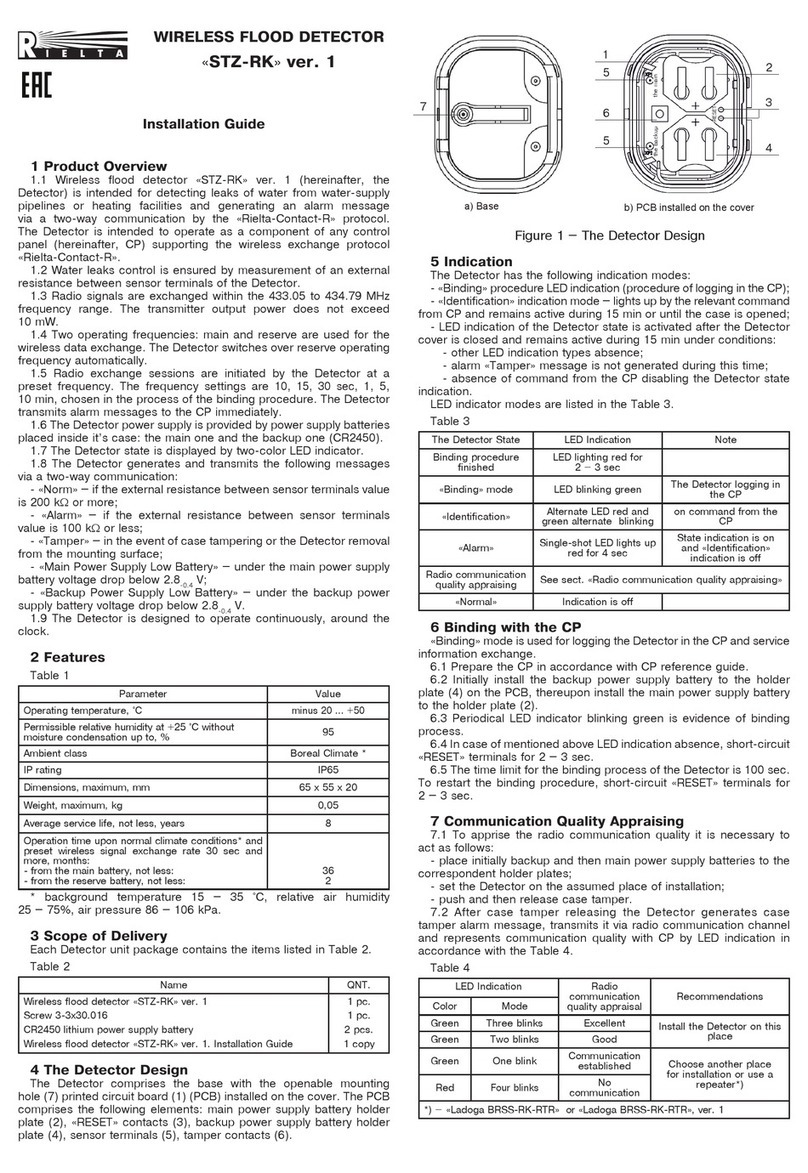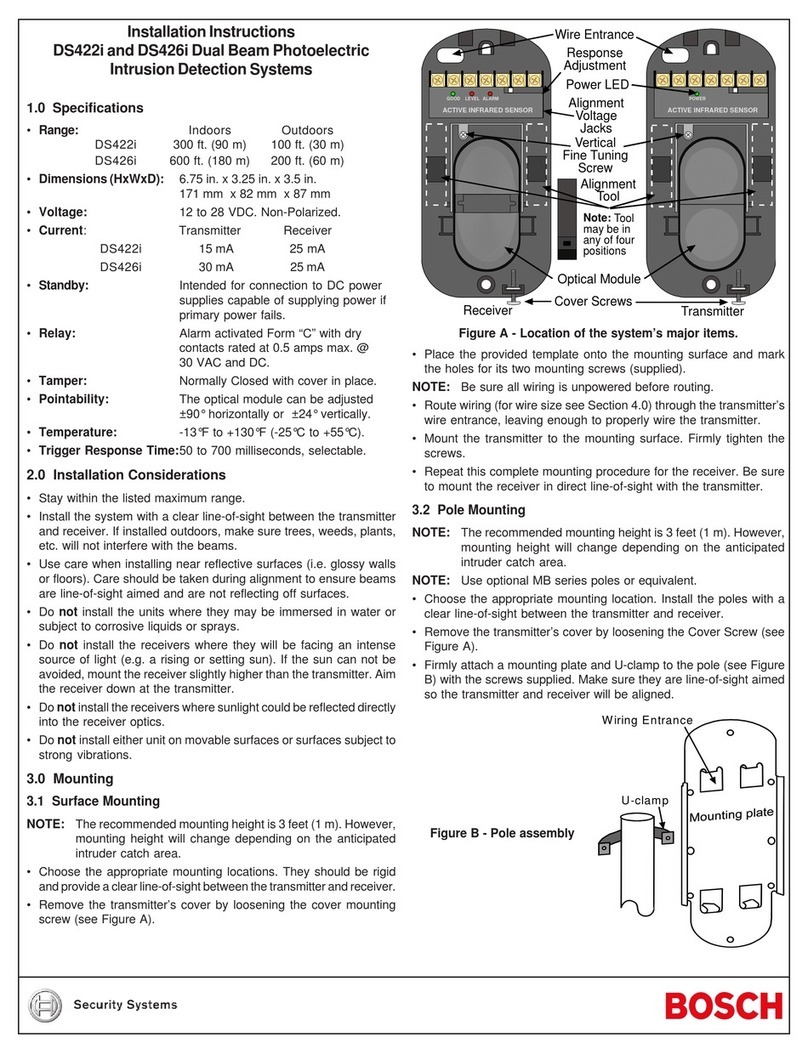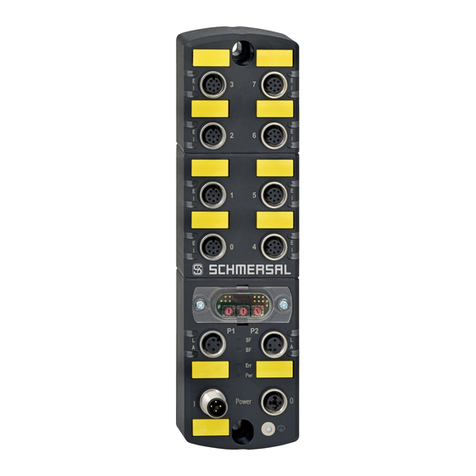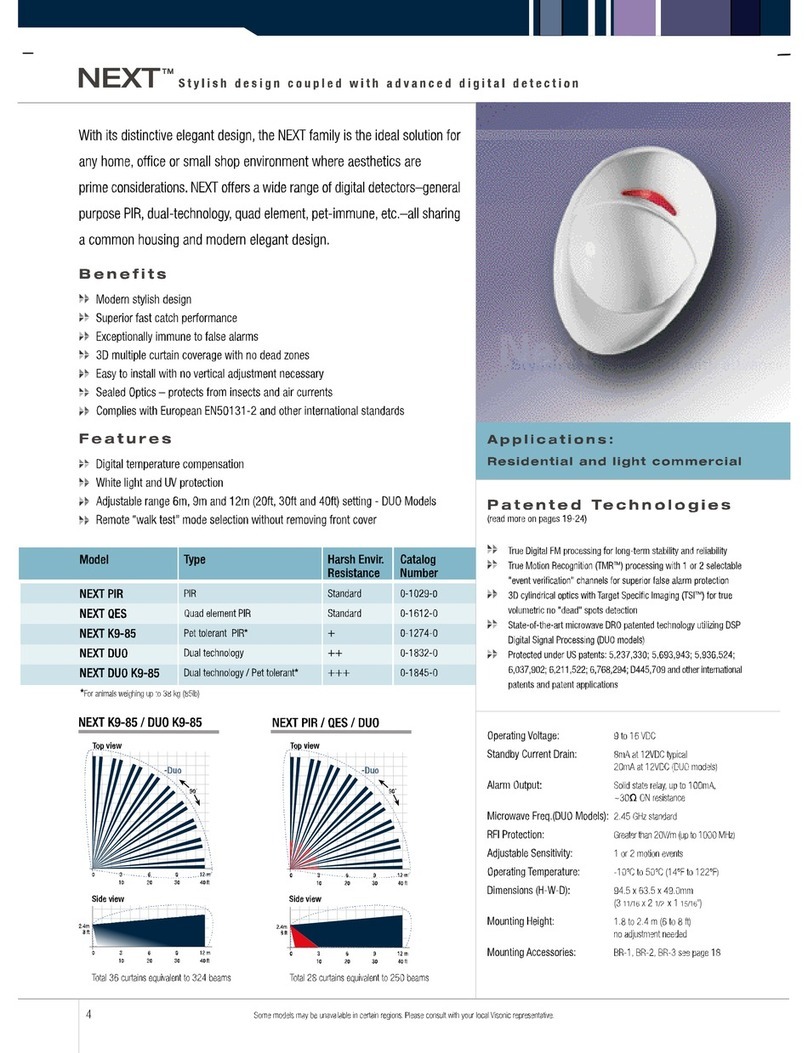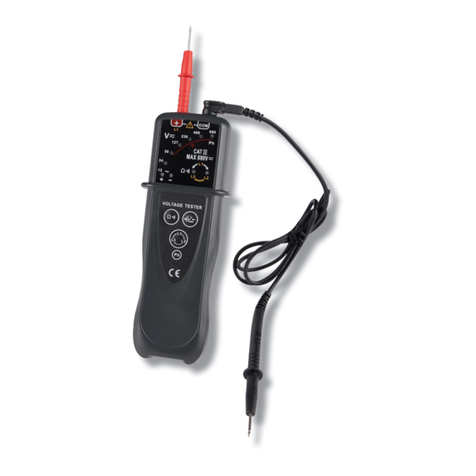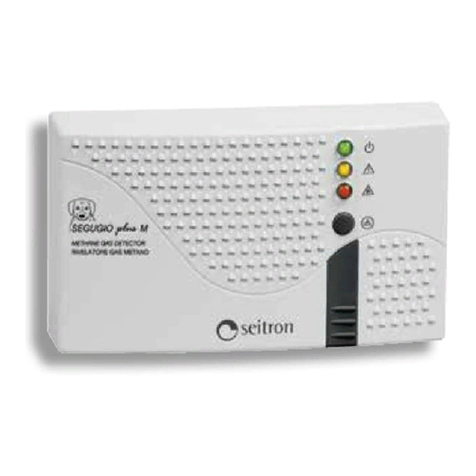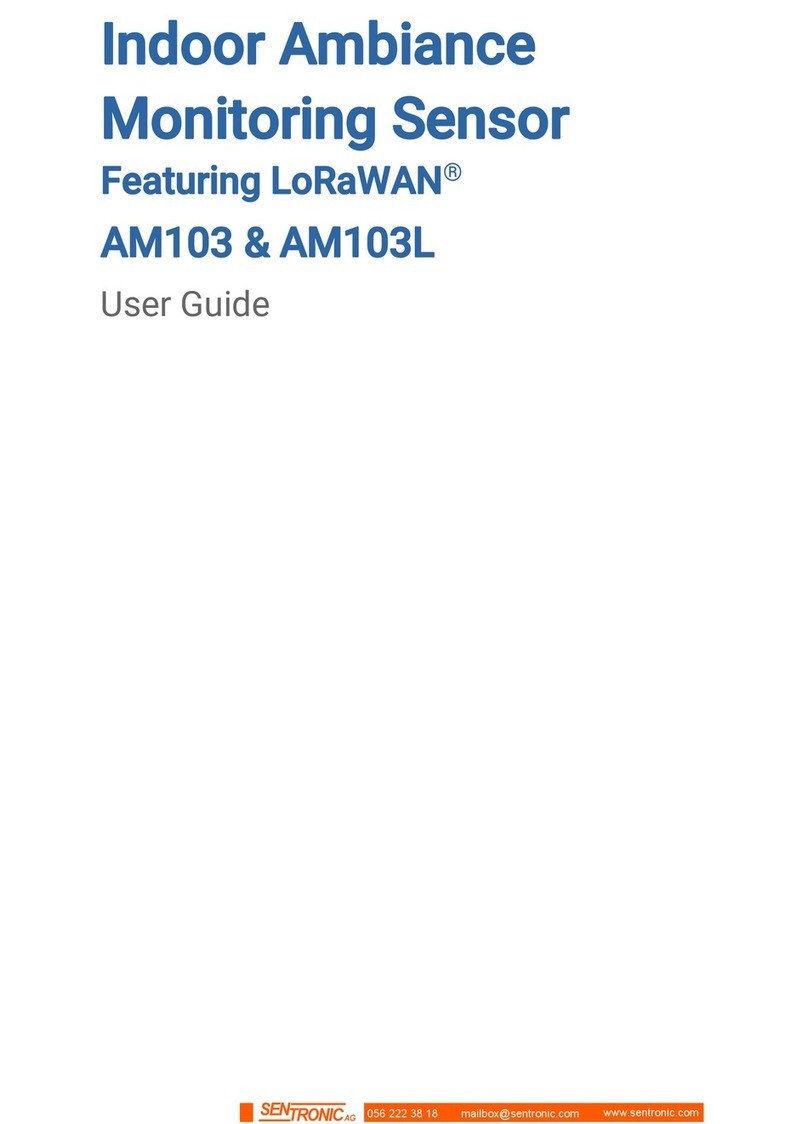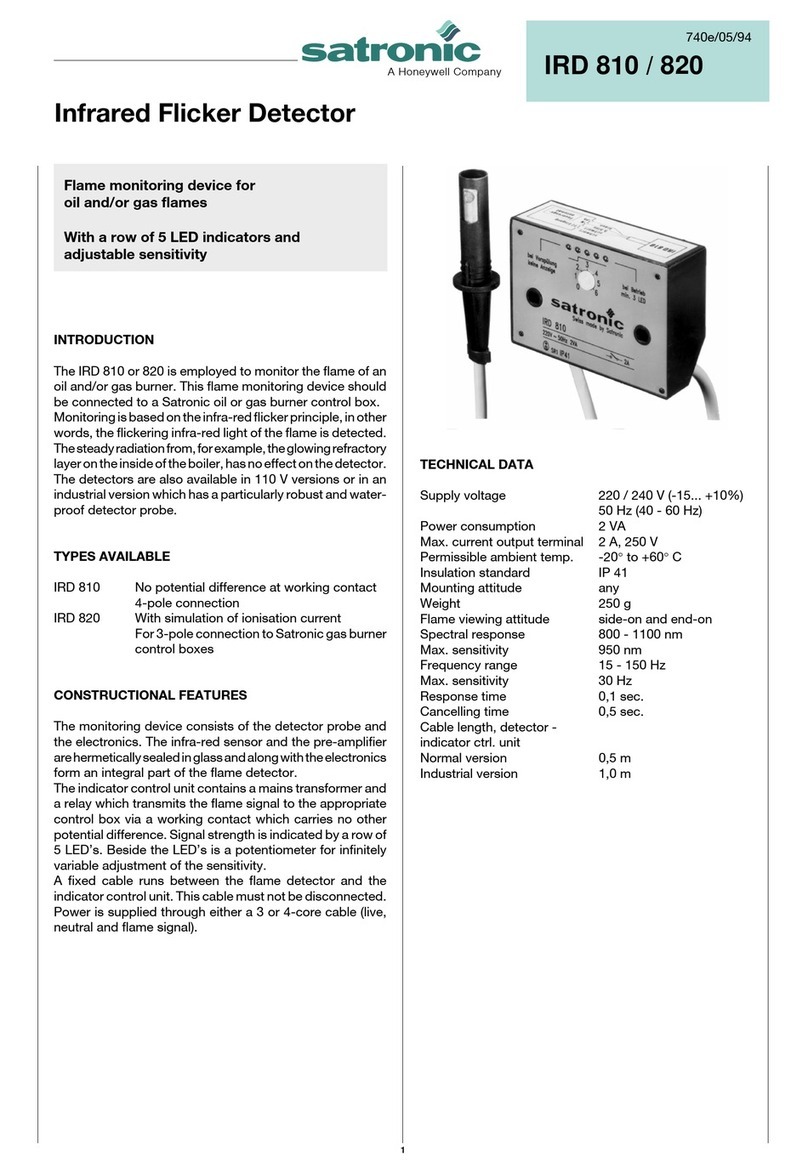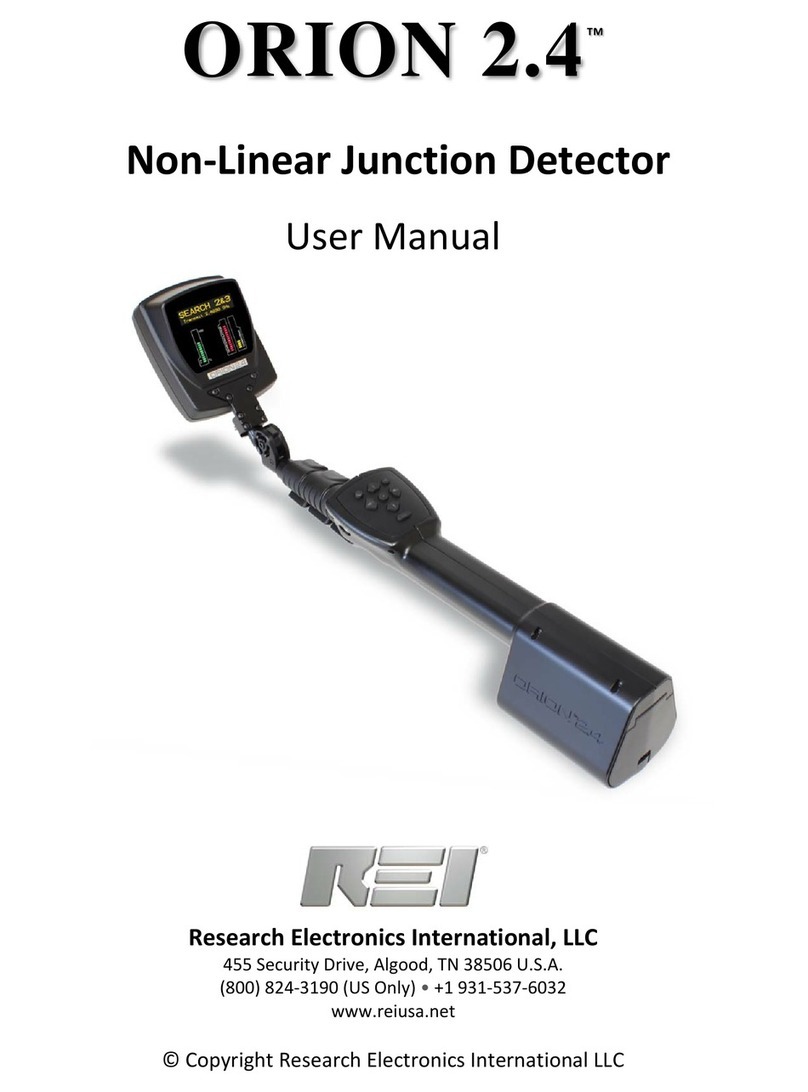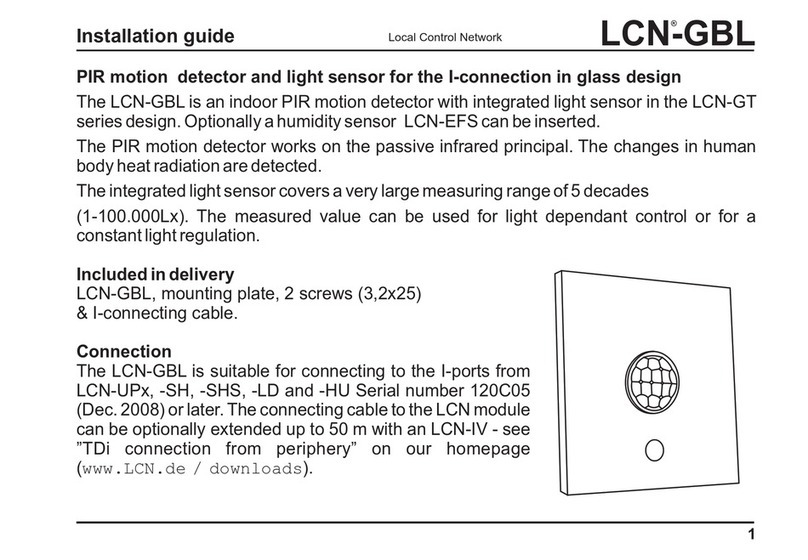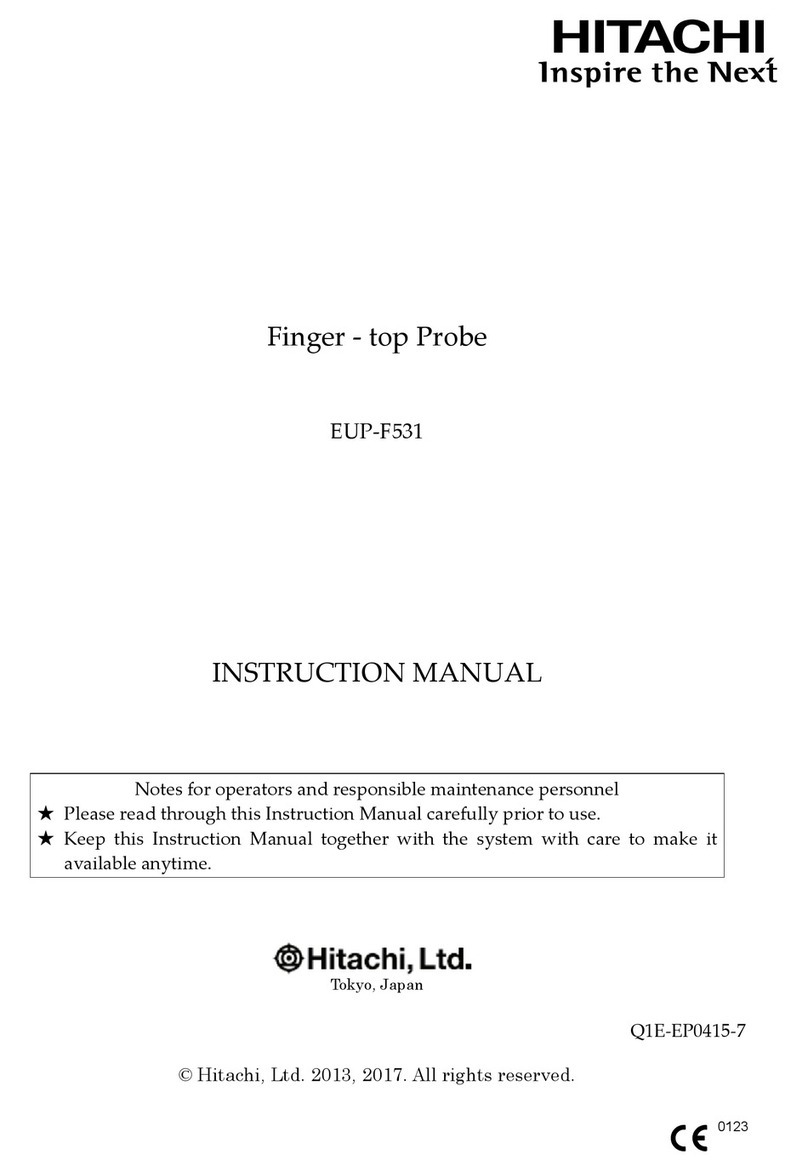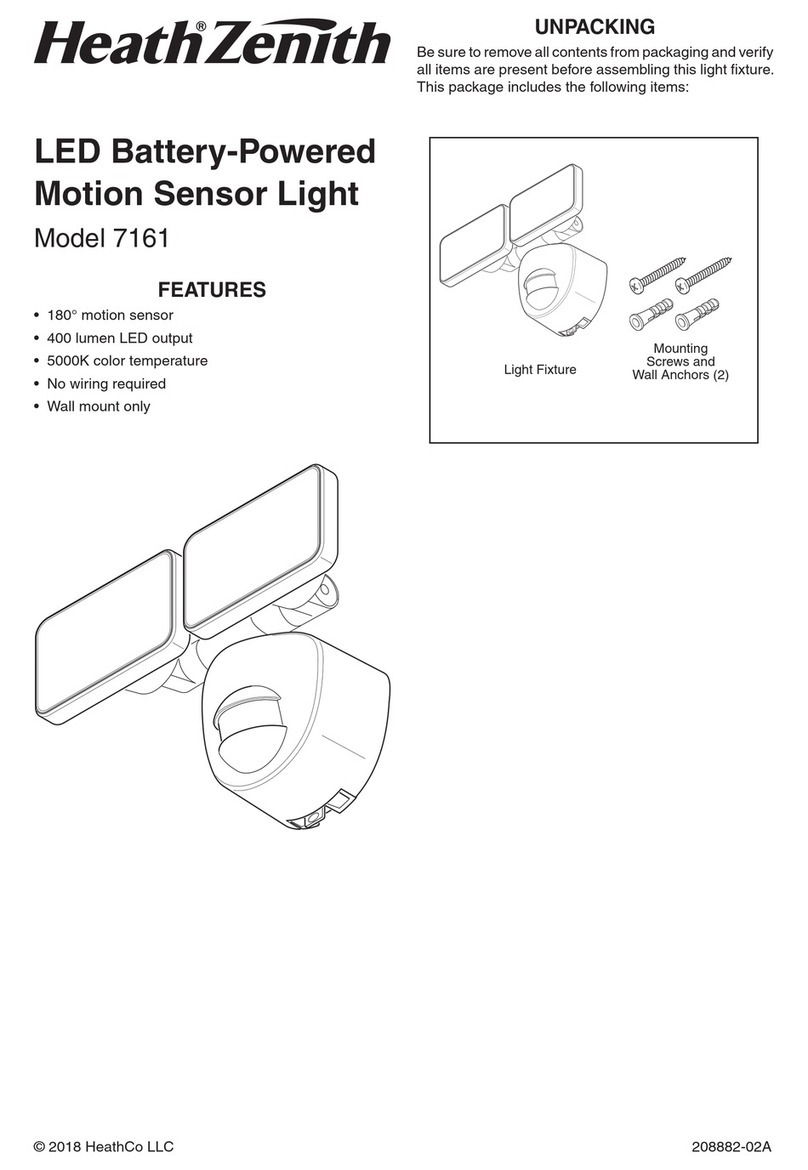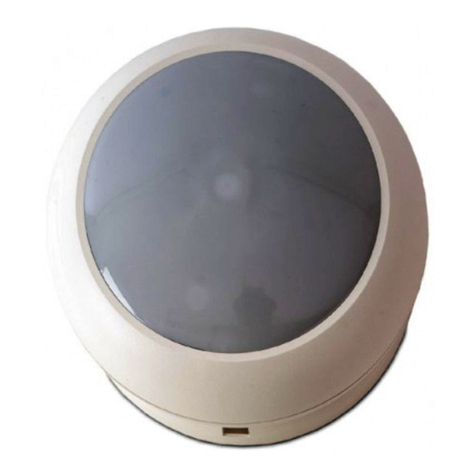Nedap i45 User manual

PRELIMINARY
i30
i45
!D Gate
!D Hybrid Gate
Firmware version 14.35 and newer
Manual FLR-line

Page of 2 55 Manual FLR-line
Contents
1 Introduction _________________________________________________________________________________ 4
RFID Regions ______________________________________________________________________________ 5
CE WEEE __________________________________________________________________________________ 5
Battery disposal ___________________________________________________________________________ 6
2 Product overview ____________________________________________________________________________ 7
Box contents ______________________________________________________________________________ 7
Components ______________________________________________________________________________ 8
Dimensions ______________________________________________________________________________ 10
Connections _____________________________________________________________________________ 13
Add-ons _________________________________________________________________________________ 14
3 Preparing the installation ____________________________________________________________________ 16
Defining the system _______________________________________________________________________ 16
Field distribution _________________________________________________________________________ 17
Detection distance, aisle width and label-free zone ____________________________________________ 19
RFID installation requirements ______________________________________________________________ 22
Power Inserter ____________________________________________________________________________ 23
Cabling __________________________________________________________________________________ 24
Device Management ______________________________________________________________________ 26
4 Executing the installation ____________________________________________________________________ 28
Conduit or slit ____________________________________________________________________________ 28
Physical installation _______________________________________________________________________ 29
Orientation of products ____________________________________________________________________ 31
Installing cabling and filters ________________________________________________________________ 35
Status LEDs ______________________________________________________________________________ 37
5 Configuring the installation ___________________________________________________________________ 40
Driver installation _________________________________________________________________________ 40
Recent browser ___________________________________________________________________________ 40
Connecting a laptop to the Renos unit _______________________________________________________ 41
Entering the configuration wizard ___________________________________________________________ 41
Authentication ___________________________________________________________________________ 41
Getting help in the wizard __________________________________________________________________ 42
Firmware version and System ID ____________________________________________________________ 42
Factory reset _____________________________________________________________________________ 42
Firmware change _________________________________________________________________________ 43
6 Integrating the installation with other systems __________________________________________________ 45
Software integration with API's _____________________________________________________________ 45
Physical integration using an IO Box _________________________________________________________ 45
URL trigger _______________________________________________________________________________ 46

Page of 3 55 Manual FLR-line
7 Servicing the installation _____________________________________________________________________ 47
Nedap Device Management ________________________________________________________________ 47
SNMP ___________________________________________________________________________________ 47
8 Troubleshooting ____________________________________________________________________________ 48
Physical installation _______________________________________________________________________ 48
Configuration ____________________________________________________________________________ 49
RF technology issues ______________________________________________________________________ 49
9 Regulatory information ______________________________________________________________________ 52
FCC and IC Compliance statement ___________________________________________________________ 52
FCC and IC Radiation Exposure Statement ____________________________________________________ 52
FCC Information to the user ________________________________________________________________ 53
10 About Nedap _______________________________________________________________________________ 54
About ___________________________________________________________________________________ 54
Contact __________________________________________________________________________________ 54

Page of 4 55 Manual FLR-line
1 Introduction
The Nedap FLR-line products are gates that can be equipped with Ultra High Frequency (UHF) RFID and/or 8.2
MHz RF detection technology. In addition to those technologies, it is possible to add infrared beam sensors for
direction detection or customer counting. The gates are specifically designed for in-store retail applications,
such as Electronic Article Surveillance (EAS), stock room to sales floor transition and goods receiving.
Knowledge Base articles
This manual provides an overview of the products, the installation and configuration. To obtain more
details on various topics or background information, several Knowledge Base articles are available,
and are referred to in this manual. You can find the Knowledge Base articles on the Nedap Retail
portal.
This manual covers the following products:
Article
number Article name Technologies Model name FCC ID IC
9563873 ASSY FL30R RF GREY 8.2 MHz RF ASSY FLR RF CGDFLRRF 1444A-FLRRF
9563881 ASSY FL45R RF GREY 8.2 MHz RF ASSY FLR RF CGDFLRRF 1444A-FLRRF
9982124 ASSY FL45R RFID R1 GREY UHF RFID
9982221 ASSY FL45R RF+RFID R1 GREY 8.2 MHz RF, UHF
RFID
9982132 ASSY FL45R RF+RFID R2 GREY 8.2 MHz RF, UHF
RFID
ASSY FLR
RF+RFID CGDFLRRFRFID 1444A-FLRRFRFID
9982159 ASSY FL45R RF+RFID R3 GREY 8.2 MHz RF, UHF
RFID
9982248 ASSY FL45R RFID R1
UPGRADE-RENOS UHF RFID
9982302 ASSY FL45R RFID R2
UPGRADE-RENOS UHF RFID ASSY FLR
RF+RFID CGDFLRRFRFID 1444A-FLRRFRFID

Page of 5 55 Manual FLR-line
Article
number Article name Technologies Model name FCC ID IC
9982175 ASSY FL45R RFID R3
UPGRADE-RENOS UHF RFID
Installing the upgrade kit
For the physical installation of the upgrade kit for the following products, an additional manual is
available that contains instructions on how to install the upgrade kit:
9982248 - ASSY FL45R RFID R1 UPGRADE-RENOS
9982302 - ASSY FL45R RFID R2 UPGRADE-RENOS
9982175 - ASSY FL45R RFID R3 UPGRADE-RENOS
This manual is for Nedap Retail certified service engineers only.
This product contains no user serviceable parts. Nedap Retail equipment should be serviced only by
authorized Nedap Retail service engineers. They will ensure that service procedures and
replacement parts used will not affect performance.
RFID Regions
Region 1: Europe (ETSI EN 302 208), Armenia, Azerbaijan, Hong Kong, India, Jordan, Oman, Russia, Saudi
Arabia, South Africa, Tunisia and United Arab Emirates
Region 2: United States (FCC Part 15.247), Australia, Brazil, Argentina, Canada, Chile, Colombia, Costa Rica,
Dominican Republic, Israel, Mexico, New Zealand, Panama, Peru, Taiwan, Uruguay and Venezuela
Region 3: People's republic of China, Singapore, Hong Kong, Japan, Korea, Thailand and Vietnam
CE WEEE
This European Standard specifies a marking
of electrical and electronic equipment in accordance with Article 11(2) of Directive
2002/96/EC (WEEE); This is in addition to the marking requirement in Article 10(3) of this
Directive which requires producers to mark electrical and electronic equipment put on the
market after 13 August 2005 with a ‘crossed-out wheeled bin’ symbol.

Page of 6 55 Manual FLR-line
that applies to electrical and electronic equipment falling under Annex IA of Directive
2002/96/EC, provided the equipment concerned is not part of another type of equipment that
does not fall within the scope of this Directive. Annex IB of Directive 2002/96/EC contains an
indicative list of the products, which fall under the categories set out in Annex IA of this
Directive;
that serves to clearly identify the producer of the equipment and that the equipment has been
put on the market after 13 August 2005.
Battery disposal
This product contains a non-rechargeable lithium battery. Replace only with the same or equivalent type
recommended by the manufacturer (Panasonic CR2032 lithium button cell). At the end of its useful life, under
various state and local laws, it may be illegal to dispose of this battery into the municipal waste stream. Check
with your local solid waste officials for details in your area for recycling options or proper disposal.
Caution
Risk of explosion if battery is replaced by an incorrect type.
Dispose of used batteries according to the instructions.

Page of 7 55 Manual FLR-line
2 Product overview
There are multiple variations within the FLR-line that support different technologies, and upgrade kits that can
upgrade an 8.2 MHz RF installation to UHF RFID later on.
In this document the following abbreviations will be used from here onwards:
'RF technology' is an abbreviation for 8.2 MHz RF technology.
'RFID technology' is an abbreviation for UHF RFID technology.
Box contents
Article number Article name Box contents
9563873 ASSY FL30R RF GREY FL30 gate with Renos RF
Installation set
9563881 ASSY FL45R RF GREY FL45 gate with Renos RF
Installation set
9982124 ASSY FL45R RFID R1 GREY
FL45 gate with Renos, RFID reader and RFID antennas
3.5 m (11.5 ft.) RFID coaxial cable
Installation set
9982221 ASSY FL45R RF+RFID R1 GREY
FL45 gate with Renos RF, RFID reader and RFID antennas
3.5 m (11.5 ft.) RFID coaxial cable
Installation set
9982132 ASSY FL45R RF+RFID R2 GREY
9982159 ASSY FL45R RF+RFID R3 GREY
9982248 ASSY FL45R RFID R1 UPGRADE-RENOS
RFID reader and RFID antennas (only compatible with FL45 gate)
3.5 m (11.5 ft.) RFID coaxial cable
Installation set
9982302 ASSY FL45R RFID R2 UPGRADE-RENOS
9982175 ASSY FL45R RFID R3 UPGRADE-RENOS
It is not possible to combine different articles in one system.

Page of 8 55 Manual FLR-line
Components
The FLR-line of products are based on the Renos platform. The Renos platform is developed by Nedap Retail
specifically for retail applications. The FLR-line of products has several serviceable parts. These are explained
in the table and highlighted in the schematic drawings.
Number Component Description
1 Lights The red LED lights can be used for user feedback or alarms.
2 RF antenna The antenna is integrated in the aluminium frame.
3
RFID
antenna
NEXT
The RFID antenna, pointing to the NEXT gate (not included in all variations).
4
RFID
antennas
PREVIOUS
The RFID antenna, pointing to the PREVIOUS gate (not included in all variations).
5 RFID reader The RFID reader takes care of reading RFID labels. It is connected to the Renos unit, and to the RFID
antennas (not included in all variations).

Page of 9 55 Manual FLR-line
Number Component Description
6 Renos unit
The Renos unit is the main processing unit of an FLR product. It takes care of powering the system, data
communication between units and with the outside world. For most products it is equipped with an RF
detection engine - with the exception of the RFID-only systems used in Region 1 to be compatible with the
OST platform.
7 Buzzer The buzzer can be used for user feedback or alarms.
850 ohm
PCB The 50 ohm PCB takes care of the connection between the Renos unit, the RF antenna and the lights.

Page of 10 55 Manual FLR-line
Dimensions
The dimensions of the gates can be found in the drawings below.
The pattern of holes in the mounting plate can be used to draw the right locations for drilling holes in the
floor.

Page of 11 55 Manual FLR-line
FL30R

Page of 12 55 Manual FLR-line
FL45R

Page of 13 55 Manual FLR-line
Connections
In the next picture a Renos unit is displayed, with a description of all its connectors and what they are used
for.
Number Connector Usage
1 50 ohm Connect the Renos unit to the 50 ohm PCB. The 50 ohm PCB connects both the light and the RF
antenna.
2 Infrared beams Connect to the optional infrared beam sensors.
3 Add-on Provide power and synchronization to add-ons, like the RFID reader.
4 Network IN Connected to the Network OUT of a previous Renos unit or a Power Inserter.
5 USB Connect accessories to Renos, like the RFID Reader.
6 Network OUT Connected to the Network IN of a previous unit or a Power Inserter. Can also be left unconnected or
connected to the customer network.
7Mini USB
service port Connect your laptop to configure the Renos system.

Page of 14 55 Manual FLR-line
Number Connector Usage
8RS485
connector Connect to the optional Nedap RF Smart Deactivator.
9Buzzer
connector Connect to the included buzzer.
The LED indicators on the Renos unit will be discussed later in this manual.
Add-ons
There are several add-ons available for the FLR-line products. The add-ons have their own manual, however,
we will discuss the function of those add-ons here.
Infrared beam sensors
Infrared beam sensors can be used for two purposes:
Customer counting in EAS role (both RF and RFID)
Direction detection when the system is used between stock room and sales floor (RFID only)
The infrared beam sensors can be easily 'clicked' in the FLR-line product.
Please note that if you want to use infrared beam sensors with a FLR-line product, ensure that every
gate in a group has sensors installed. It is not possible to only have sensors in the first and last gate
of a group.

Page of 15 55 Manual FLR-line
RF Smart Deactivator
The RF Smart Deactivator can be used to deactivate RF labels at the checkout. When connected to a Renos
system, it can be powered by a Renos system. The Renos system is also able to gather information from the
deactivator, like whether the deactivator is operational or not.
The RF Smart Deactivator cannot be used in systems where RFID is enabled.
RF security dashboard
The Renos platform has a built-in RF security dashboard. It can be enabled by entering a license key during the
configuration wizard. The customer can then visit the dashboard via the web browser. To make this work, the
Renos system should be either connected to the customer network, or a stand-alone set-up with a router
should be made.

Page of 16 55 Manual FLR-line
1.
2.
3.
3 Preparing the installation
When preparing an installation with FLR-line products, there are a few things that should be taken into
account:
How much gates you would need to cover an entrance or door
Where the gates will be placed in relation to the environment, to minimize interference (RF) and
reflections (RFID)
The number of Power Inserters that is needed to power the system
Which cabling needs to be installed
The firewall settings that need to be in place to enable Device Management
As those requirements differ based on which technology is used (RF, RFID or both), both technologies are
described in a different section.
Free-standing gates
If the gate is going to be free-standing in a super- or hypermarket environment, please take proper
precautions in terms of crash-protection. When customer guidance rails are available, you can use
those rails to protect the antenna against crashes by placing the antenna behind or after the
customer guidance rails.
When not available, use Nedap crash protection against shopping carts.
Defining the system
When a store requires gates to be placed at several locations, there needs to be a decision on how to combine
these gates into one or multiple systems. The following rules need to be taken into account:
A different role is a different system. It is not possible to combine gates for Electronic Article
Surveillance (EAS) with gates for stock room to sales floor in one system. Both roles need different
systems with their own Power Inserter and customer network connection.
Within the EAS role, create as large systems as possible. To minimize interference between gates, the
Renos platform has a built-in synchronization mechanism for both RF and RFID technology. For this
synchronization mechanism to work, the gates need to be connected in one system.
However, the maximum cable length requirements needs to be satisfied. If it is not possible to put all
the gates within a role in one system due to the maximum cable length requirements, you can split the
gates into two or more systems. In this case assign each system a different duringmulti-system channel
the RF configuration.

Page of 17 55 Manual FLR-line
Stock room to sales floor and goods receiving
For the stock room to sales floor and goods receiving roles: when there is a different door or
entrance, build a separate system.
It is not possible to combine gates with RFID and without RFID in one system. Either all gates should
have RFID, or no gates should have RFID.
Field distribution
As RF and RFID are different technologies, their field distribution is different.
Field distribution for RF
There are two modes of operation for RF technology. The mode can be configured during the configuration
wizard.
With Edge Detection. There is a field around the gate. This mode is mainly used when the gates are placed
near the checkouts, as you can have one gate covering a relatively large area.
Infra-read beam sensors
Please note that when you want to use infrared beam sensors for customer counting, you can only
count customers in between the gates. So, if you enable Edge Detection, you are not able to count
customers outside of the gates.
There is a field in between gates. This mode is mainly used at the exit/entrance areaWithout Edge Detection.
of a store, as it is better to have antennas on the side, than in the middle of the passageway.

Page of 18 55 Manual FLR-line
Field distribution for RFID
In contrary to RF, with RFID the field is side-dependent. This means that there are two antennas inside each
gate, pointing to opposite directions. If there is more than one gate in a group, there is a detection field in
between gates. This is the default mode of operation.
If you combine both RF and RFID in one system, we recommend to disable Edge Detection. In this
way, the behaviour for both technologies is approximately the same.
If there is one gate in a group, it is not possible to make an aisle. To still have detection, you need to choose a
detection side of the gate. This can be either facing the previous gate or the next gate. This mode is mainly
used for small passageways, like with toilets.

Page of 19 55 Manual FLR-line
Detection distance, aisle width and label-free zone
The next step after understanding the field distribution, is understanding how many gates you need. This
depends on the detection distance (or aisle width) of the system. There is no fixed answer to this question, it
depends on many factors, like customer expectation, quality of the tags, the environment, etc.
The recommendations below are based on the Nedap NT4040 (reference label) for RF, and the Nedap RFID
hard tag (for RFID).
Please note that only the recommended 'detection distance' or 'aisle width' is specified. Depending
on the tag used and the environment the gates are placed in, sometimes larger values can be
achieved. It is advised to test this, before using it in a store.
Without RF Edge Detection or with RFID
We speak about 'aisle width' in this case.
When RF Edge Detection is disabled, the following recommendations are in place:
For the FL30R gate: an aisle width of 170 cm (5.6 ft.) is recommended.
For the FL45R gate: an aisle width of 200 cm (6.6 ft.) is recommended.
We recommend to have a label-free zone (both RF and RFID) of more than 100 cm (3.3 ft.) from the center of
the antenna.

Page of 20 55 Manual FLR-line
With RF Edge Detection (without RFID)
We speak about 'detection distance' in this case.
When RF Edge Detection is enabled, the following recommendations are in place:
For the FL30R gate: a detection distance of 85 cm (2.8 ft) is recommended.
For the FL45R gate: a detection distance of 100 cm (3.3 ft) is recommended.
We recommend to have a RF label-free zone of more than 150 cm (4.9 ft.) from the center of the antenna
behind the antenna, and 100 cm (3.3 ft.) into the store.
RF installation requirements
The operation of RF technology is affected by both coupling issues (the antenna couples with other objects)
and by active interferers (other devices that transmit a signal around 8.2 MHz). Objects that cause coupling
effects could be windows, doors, metal framing around the checkout, etc. Interferers can be created by
another RF system, but also motors driving doors or roller shutters.
Take the following placement requirements into account when projecting the location of gates:
There should be a minimum distance of 20 cm (8 in.) between the center of the gate and the wall.
There should be a minimum distance of 200 cm (6.6 ft.) between 8.2 MHz tags and/or labels and the
nearest antenna. If this is not possible, the labels and tags can be stored in a metal box in the checkout.
This manual suits for next models
3
Table of contents
